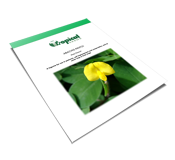-
International
With a presence in Asia, Africa, Australia and the Pacific, the Caribbean, and the United States; working with both small farmers and large enterprises we are never too far from your needs. -
-
TROPICAL SEEDS, LLC
2175 NW 24TH AVE.
MIAMI, FLORIDA 33142-7279
USA
Phone: +1 954 7536301
-
ARACHIS PINTOI

Pinto Peanut
The company SEFO-SAM Cochabamba, Bolivia, produces for us seed of Arachis Pintoi
by small producers engaged in artisan production.
www.sefosam.com
http://web.supernet.com.bo/sefoScientific name: Arachis pintoi
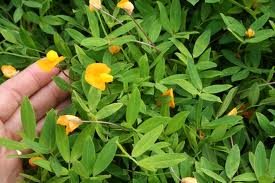 Common name: Pinto Peanut
Common name: Pinto PeanutA legume for use in pastures, soil improvement and conservation, and as cover crop in fruit crops
General Description: Arachis Pintoi is well consumed by cattle, sheep, and horses and its dry matter production ranges from 8 to 12 tons/ha (7-10.5 lb. /ac) per year, with periodic cuts at intervals of 8-12 weeks. Protein content ranges between 17% and 20%, and dry matter digestibility between 67% and 71%. The legume is capable of fixing up to 300 kg/ha (268 lb. /ac) of nitrogen per year. Its low forage production makes it unsuitable as cut-and-carry forage.
General Characteristics: This perennial herbaceous legume is characterized by a stoloniferous, creeping growth habit, with a strong taproot. Leaves are alternate and composed of four leaflets. This cultivar grows well at sites with an annual precipitation of 1,300 mm, but performs best under humid tropical conditions, where precipitation is higher and there are no intermediate dry periods. Once established, this legume tolerates moderate waterlogging and drought, and grows well under shade. Although cultivar Arachis Pintoi adapts to acid soils with high aluminum.
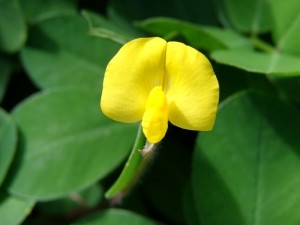
Main attributes: A. pintoi is a highly persistent palatable pasture legume with a high feeding value for (sub) humid (sub) tropical climates tolerant to heavy grazing and shade.
Performance: Moderate to heavy grazing pressures are necessary for best performance. In Colombia, annual DM production ranging from 5 t/ha growing with Brachiaria dictyoneura, which produced 20 t/ha, to 10 t/ha when grown with B. ruziziensis, which produced 11 t/ha. It has yielded 5 t/ha of DM in pure stands under 30% shade in Indonesia and 3 t/ha in full sunlight in Malaysia. In Costa Rica livn Costa Rica live weight gains of cattle grazing A. pintoi in a mixed pasture with Brachiaria brizantha of nearly 1000 kg/ha/year were recorded.
Stoloniferous habit ensures easy spread.Uses: Arachis Pintoi can be utilized in pure stands under grazing or as cut-and-carry forage or it can be associated with erect or stoloniferous grasses. It is also used as ornamental ground cover and as cover crop in perennial crops, such as coffee, plantain, citrus fruits, and African palm, in the humid tropics. The intervals of rest and grazing will depend on the associated grass.
Season of growth: Best growth takes place in the warm rainy season but it can survive dry seasons of 4 months or more.
Frost tolerance and regrowth after frosting: Leaves and stolons are killed by frost, but new growth occurs again in spring from rhizomes.
Flooding tolerance: Tolerant to periodical flooding.
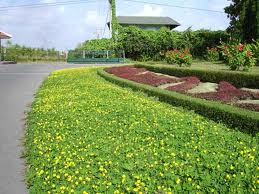 Shade tolerance: High tolerance to shade, where it often appears more vigorous than in full sunlight.
Shade tolerance: High tolerance to shade, where it often appears more vigorous than in full sunlight.Drought tolerance: It shows some drought resistance.
Saturation: It grows best in sandy loam soils of moderate to high fertility and high organic matter content.
Soil requirements: Grows best in well-drained sandy to clay soils, with low to neutral pH and low to high fertility. Fails to persist on seasonally waterlogged, poorly structured clays. It tolerates high levels of Al and MN, but has low tolerance of salinity.
Rhizobium relationships:Inoculation often necessary with a highly specific strain of Bradyrhizobium (strains QA1091, CIAT3101 being the most effective) immediately before planting, but not necessary with vegetative propagation.
Ability to spread naturally: Stoloniferous habit ensures easy spread.
Land preparation before establishment: A clean seed-bed is preferred.
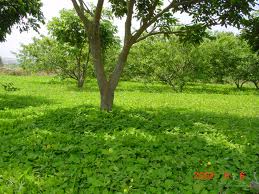 Sowing methods: Fresh seed has a high level of dormancy which may be reduced by drying at 35-40°C for 10 days. Seed at 10-15 kg seed in pod/ha should be sown 2-6 cm deep, followed by rolling. Seedlings develop quickly following epigeal germination, and with good growing conditions and several plants per m2, complete ground cover can be achieved by a network of stolons in about six months. Seed remains viable in the ground for more than one season.
Sowing methods: Fresh seed has a high level of dormancy which may be reduced by drying at 35-40°C for 10 days. Seed at 10-15 kg seed in pod/ha should be sown 2-6 cm deep, followed by rolling. Seedlings develop quickly following epigeal germination, and with good growing conditions and several plants per m2, complete ground cover can be achieved by a network of stolons in about six months. Seed remains viable in the ground for more than one season.
In moist climates vegetative propagation succeeds well.Seed production: Flowering may commence three to four weeks after emergence and continues through the growing season. Ovary on a gynophore or peg, which elongates to up to 27 cm after pollination and pushes the ovary up to 7 cm depth into the soil. Seed production ranging between 200 and 7000 kg/ha has been reported from Costa Rica and Colombia.
Nutrient requirements: Grows well in soils low in P, but some P fertilizer is advisable for soils extremely low in P. Liming is rarely necessary.
Compatibility with grasses: Combines well with aggressive creeping grasses such as Brachiaria decumbens, B. dictyoneura, Paspalum notatum, Axonopus affinis, Digitaria eriantha and Cynodon dactylon, but also forms stable mixtures with bunch grasses such as Panicum maximum where the legume colonizes well the inter-bunch spaces.
Altitude range: A. pintoi is essentially a (sub) tropical lowland species, but it also grows extremely well in the coffee zone of Colombia (ca. 1400 m asl).
Rainfall requirements: Best suited to rainfall above 1100 mm per annum, but it can survive dry seasons of at least 4 months.
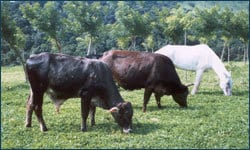 Grazing management: Very tolerant to heavy grazing.
Grazing management: Very tolerant to heavy grazing.Feeding value: Depends on age of the material. In vitro digestibility varies from 60-76%, N concentrations from 2.5-3.0% and P concentrations from 0.18-0.37%. Readily eaten by cattle at all stages of growth.
Toxicity: None recorded.
Cultivars: Many accessions are available, harboring significant genetic variability, allowing considerable potential for cultivar development. Commercial cultivars of A. pintoi have been released in Australia (Amarillo), Costa Rica (Mani Mejorador, Porvenir), Brazil, CC Colombia (Maní Forrajero Perenne), Honduras (Pico Bonito).
Pests and diseases: Diseases cause no long-term or serious damage, but rats and mice are attracted to the nuts and can be a problem. Cv ‘Amarillo’ is resistant to the major groundnut diseases, rust (Puccinia arachidis) and leaf-spot (Mycosphaerella spp.). Other fungi (Phomopsis sp., Cylindrocladium sp. and Colletotrichum gloeosporioides) have been isolated from leaf-spots, the latter being associated with black stem lesions in Colombia. Also Rhizoctonia Foliar Blight has been observed. ‘Amarillo’ has moderate to high resistance to the various root-knot nematodes (Meloidogyne spp.) but is susceptible to the root-lesion nematode (Pratylenchus brachyurus). Leaves of some plants have an apparently non-pathogenic variegation.
GENERAL INFORMATION ARACHIS PINTOI Adaptation to soil pH Tolerates acid soils Soil fertility Low Drainage Tolerates light waterlogging Altitude 0-1,300 m above sea level (0-4,264 ft) Precipitation >1,300 mm per year (55.22 in) Planting rate 8-10 kg seed/ha (7-9 lb/ac) Planting depth 2 cm (3/4 in) Fertilization at establishment 30 kg/ha (27 lb/ac) each of P and K <> Crude protein content 17%-20% Digestibility 67%-71% Uses Grazing in association with grasses, as cover crop, and ornamental ground cover -
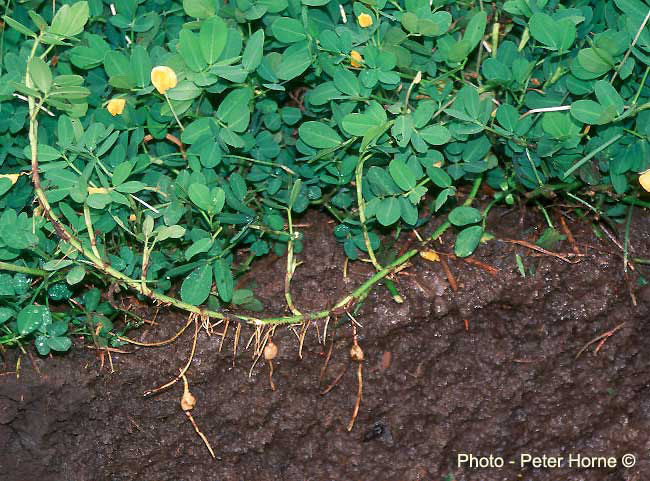
Arachis Pintoi leaves and roots
-
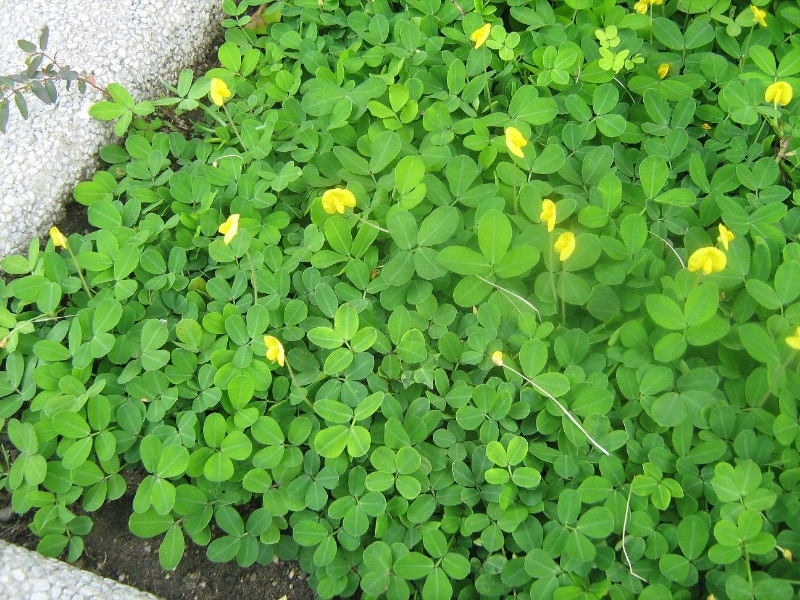
Arachis Pintoi peanut flowers and leaves
-
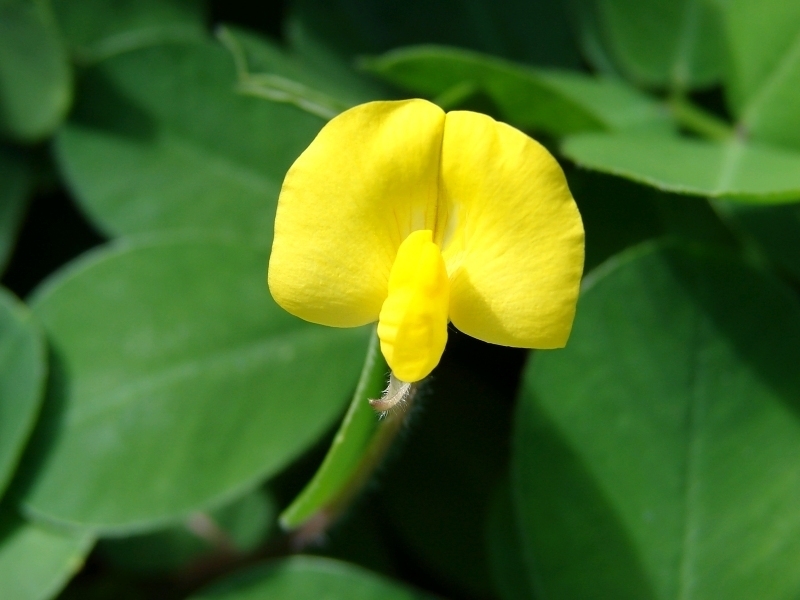
Arachis Pintoi peanut flower
-
-
TROPICAL SEEDS, LLC
2175 NW 24TH AVE.
MIAMI, FLORIDA 33142-7279
USA
Phone: +1 954 7536301

